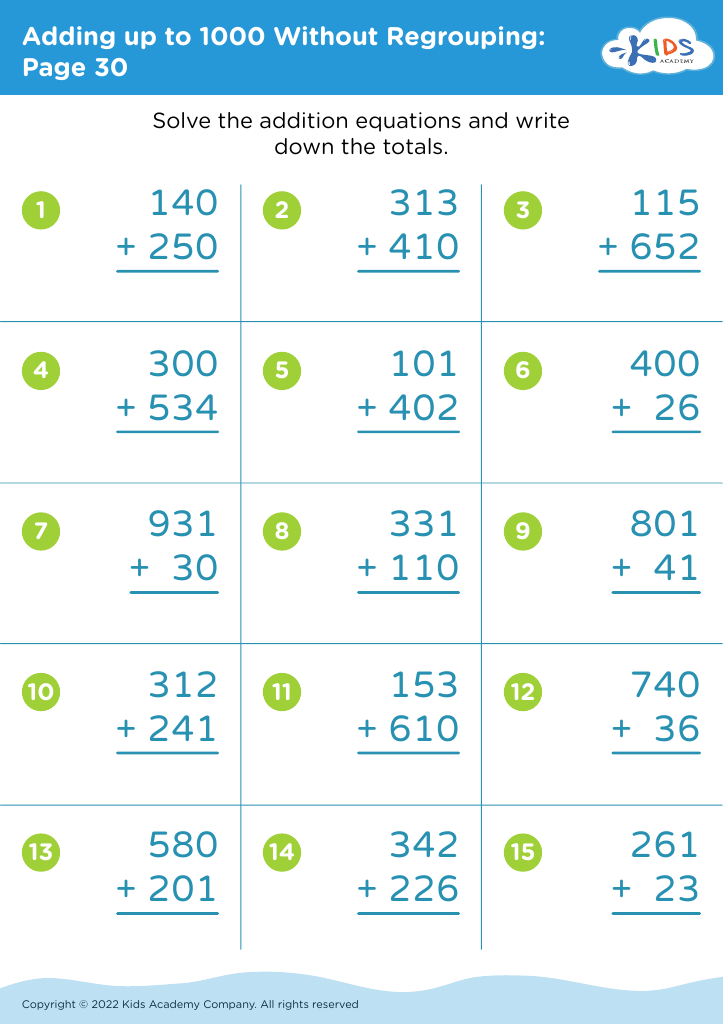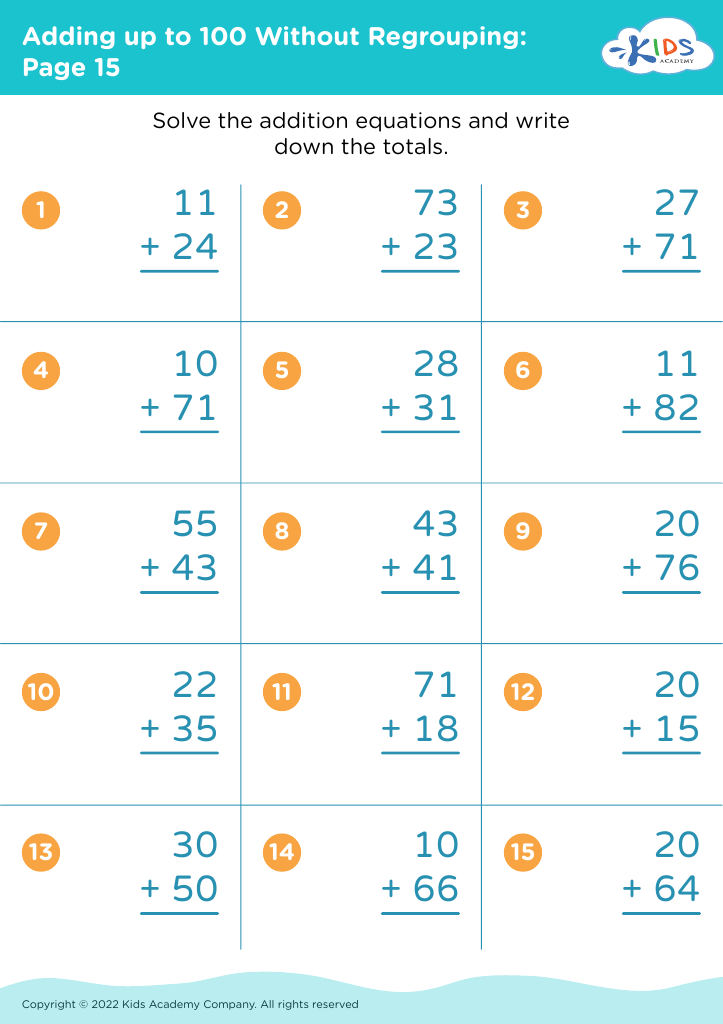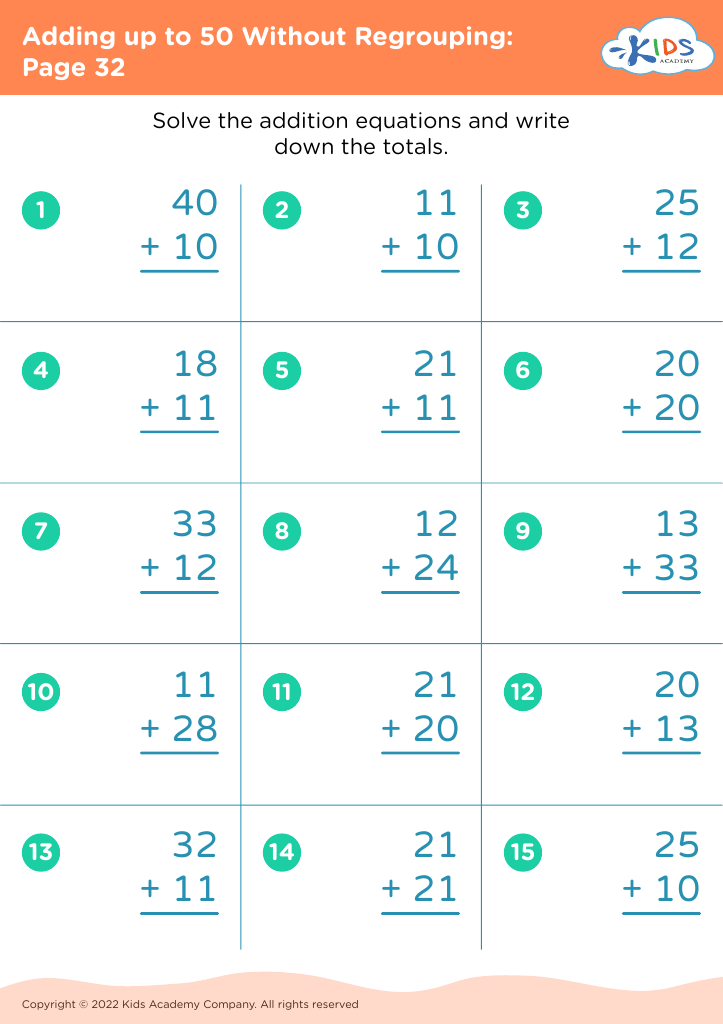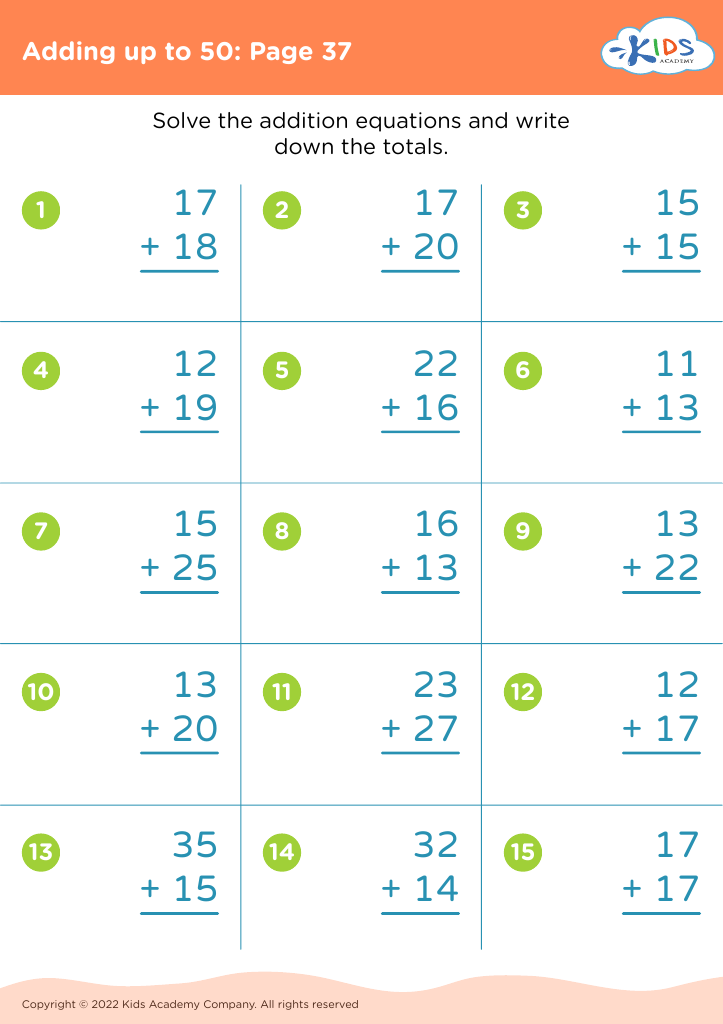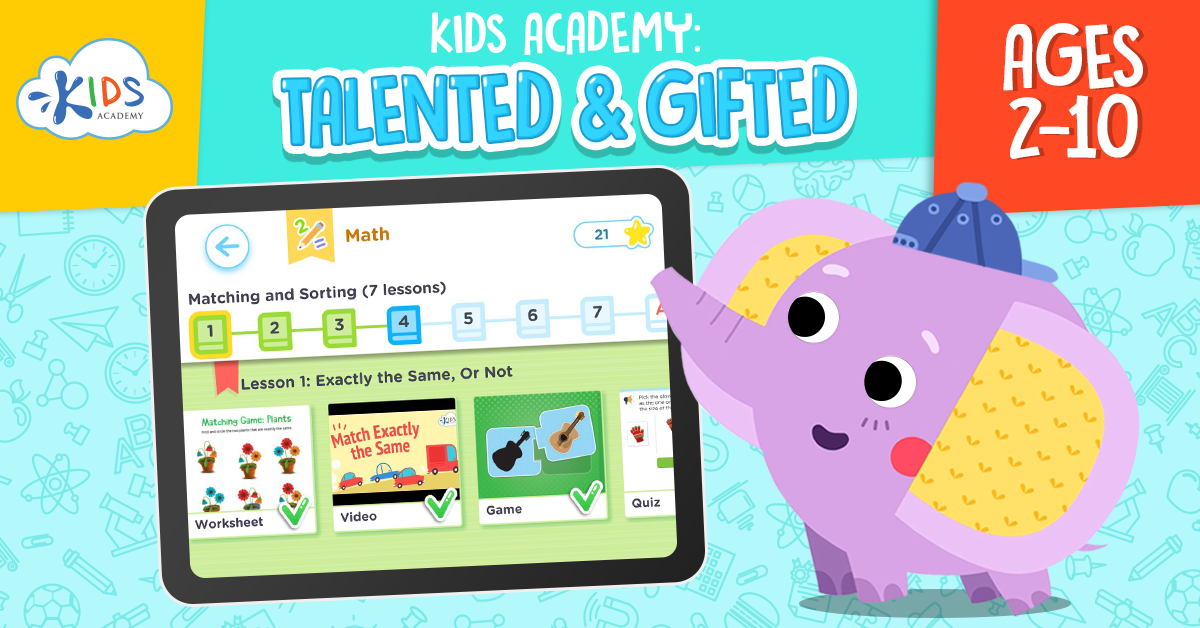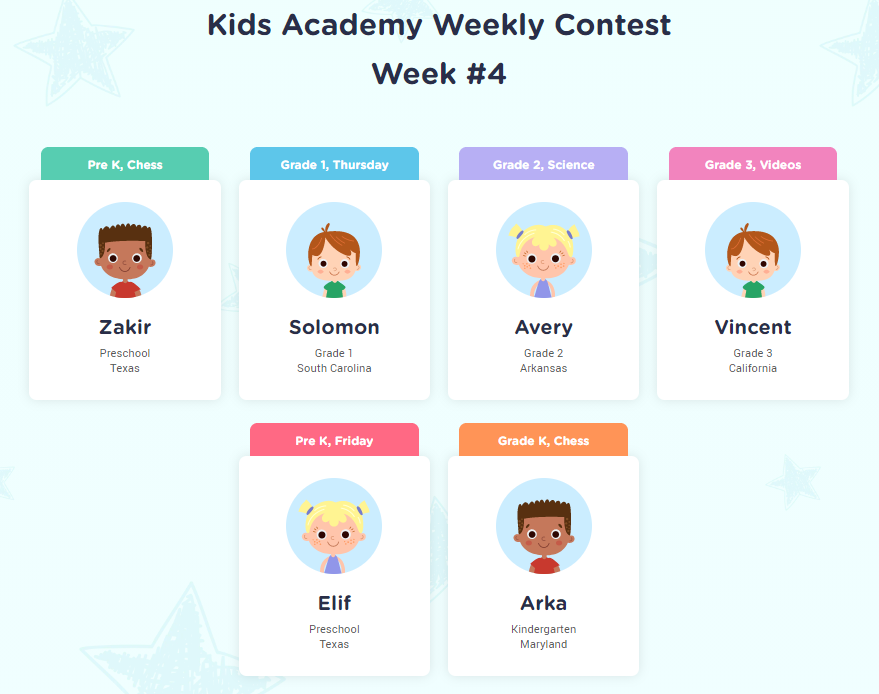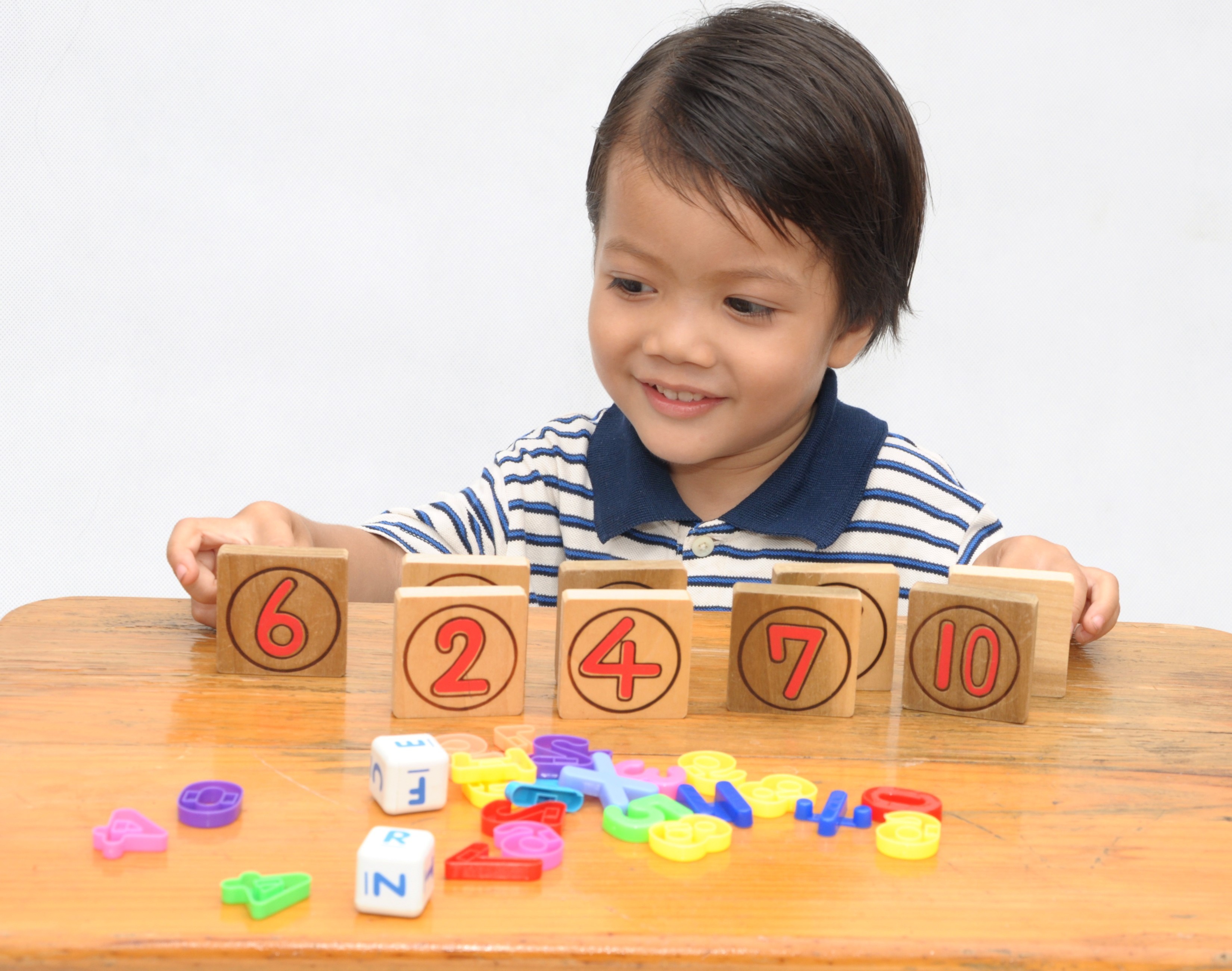Counting objects Math Worksheets for Ages 6-9
10 filtered results
-
From - To
Explore our engaging Counting Objects Math Worksheets designed for children ages 6-9! These interactive resources help young learners develop essential counting skills through fun and relatable exercises. Our worksheets feature a variety of colorful images and practical activities that make counting exciting and accessible. By working on these worksheets, students will strengthen their number recognition and one-to-one correspondence skills, laying the foundation for future math success. Perfect for at-home practice or classroom use, our Counting Objects Math Worksheets will inspire a love for learning while providing valuable practice to boost confidence in math. Start counting with us today!
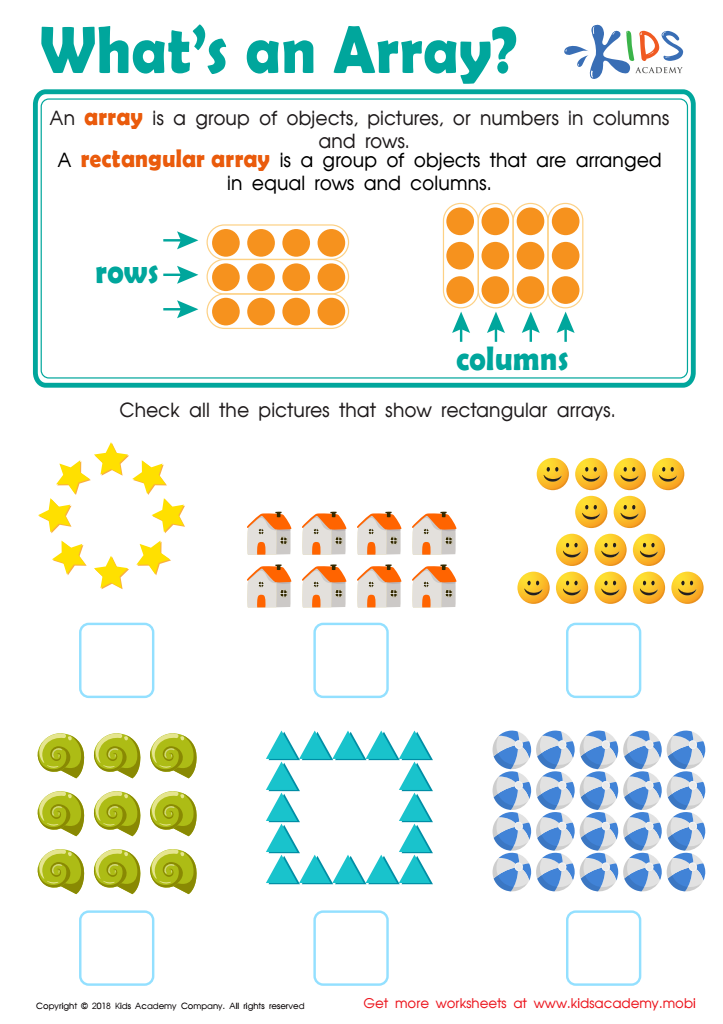

What's an Array? Worksheet
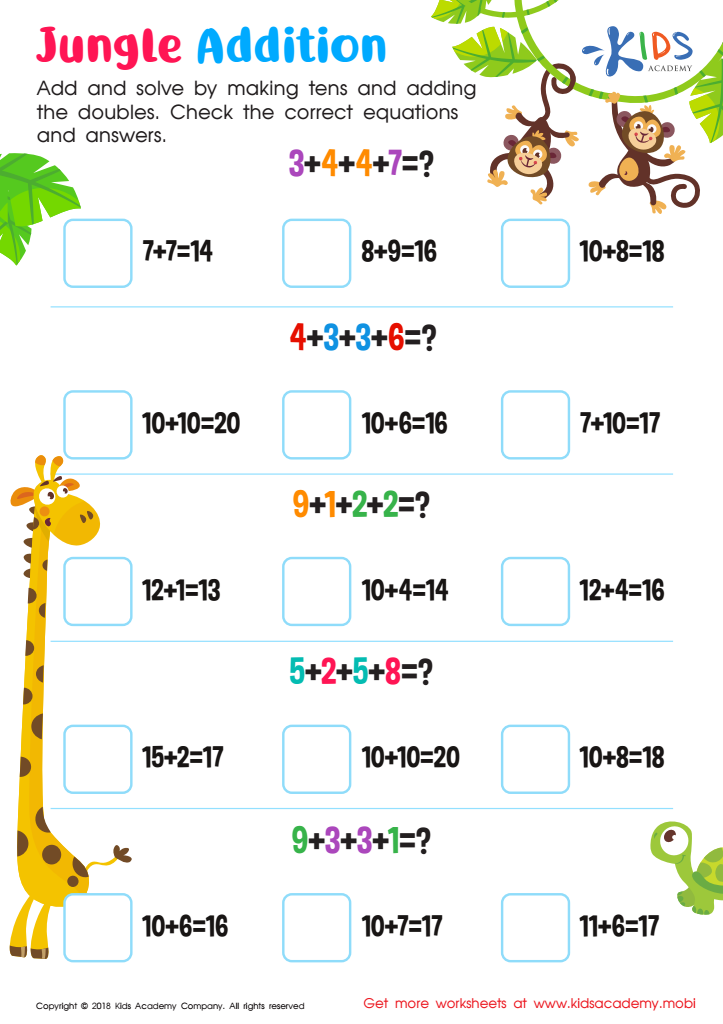

Jungle Addition Worksheet
Counting objects is a fundamental skill that serves as the foundation for more advanced mathematical concepts and problem-solving abilities. For children aged 6 to 9, developing counting skills is crucial for several reasons.
Firstly, it fosters number sense—an understanding of quantities and their relationships. Mastery in counting allows children to comprehend topics such as addition and subtraction more intuitively, aiding their overall cognitive development.
Secondly, counting objects introduces important concepts like grouping and one-to-one correspondence, reinforcing the significance of organization in math. Learning to count different types of objects—whether they are toys, fruits, or books—makes mathematics relatable, engaging, and relevant to their daily lives.
Furthermore, counting fosters patience and focus, essential skills for learning. As children practice counting, they develop concentration and perseverance, which are beneficial in all areas of study.
Finally, parental and teacher involvement boosts a child's confidence in math. By actively participating in counting activities, they demonstrate its value, reinforce positive attitudes towards mathematics, and lay the groundwork for future academic success. Ultimately, prioritizing counting skills in early education helps shape resilient learners equipped for various challenges ahead.
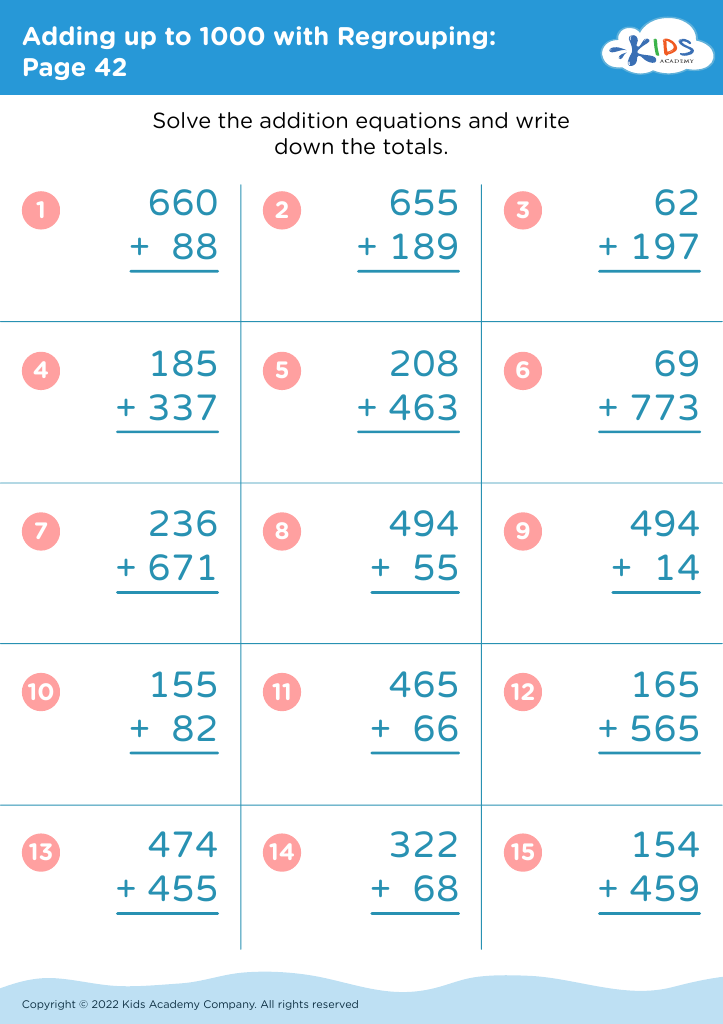
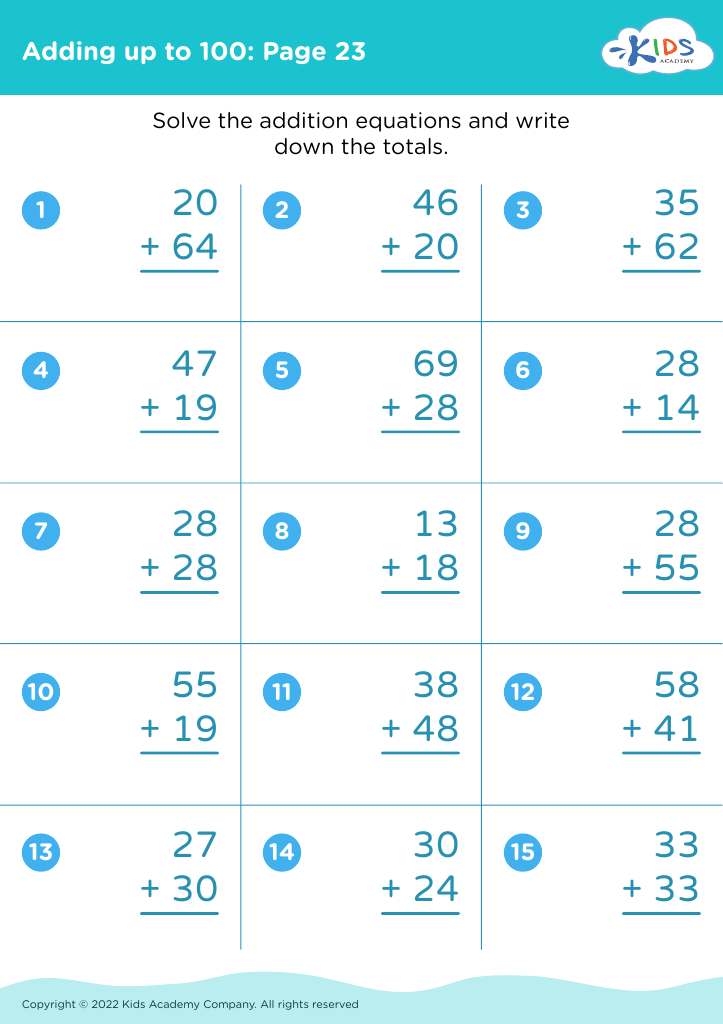
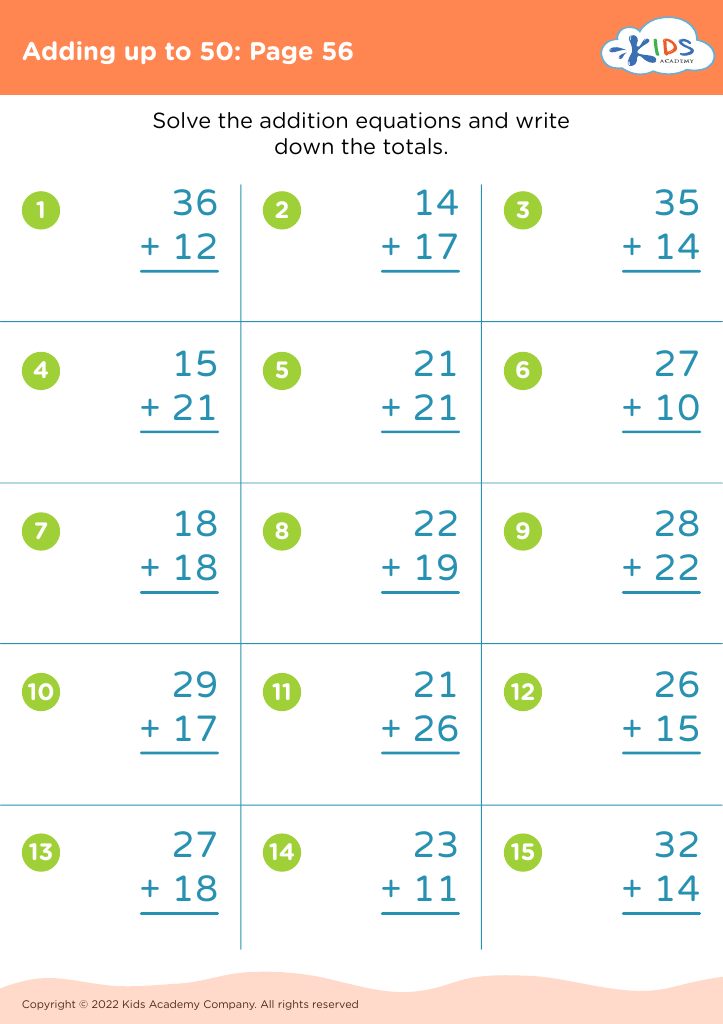
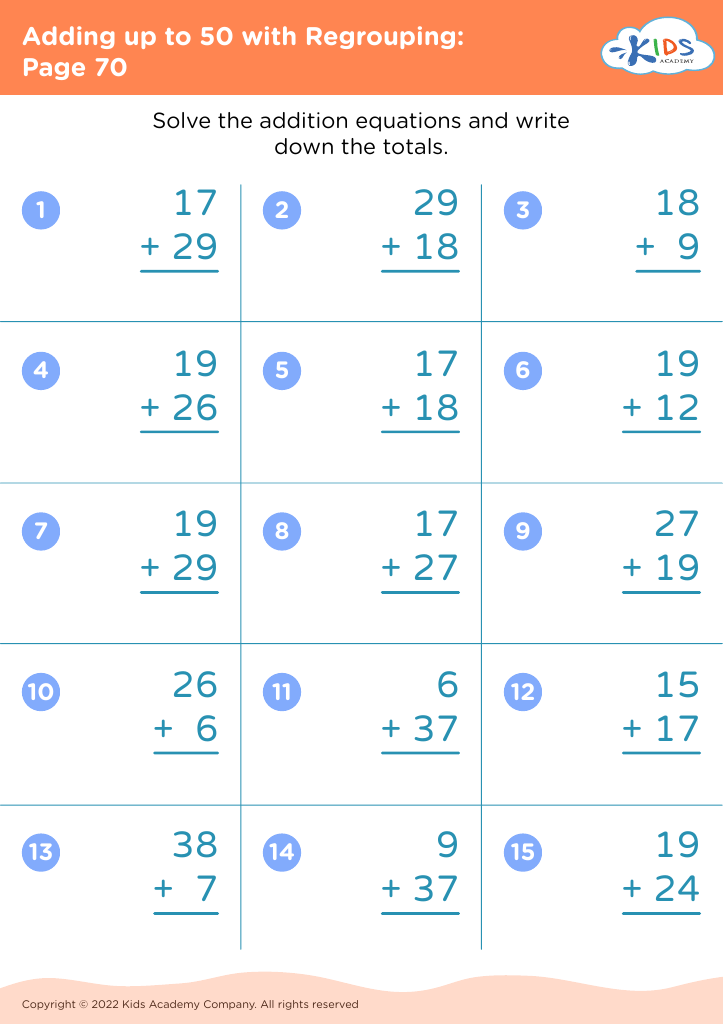
 Assign to My Students
Assign to My Students
